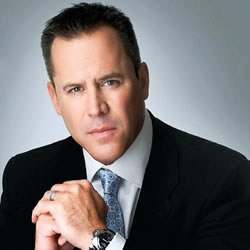Have you ever read a book and instantly had an idea for a title that perfectly captured the spirit of the story? If so, congratulations. You’ve just waltzed through creating a book title—one of the hardest parts of publishing.
I speak from experience. Most often, I steer clear of naming my novels, but when I get cornered, I quickly remember how out of my element I am. The process of writing a 400-page story couldn’t be more different than coming up with several words thrown haphazardly together into a greater whole. The first task is a slow, painstaking slog while the second is more a bolt of inspiration.
Description
It’s always challenging to distill a 100,000+ word manuscript into a two or three-word description. The line is a fine one to tread: We want to give readers an accurate and compelling glimpse of the plot while carefully avoiding spoilers.
Take Red War, my upcoming book. When the team suggested it, I could immediately visualize the text on the cover. It’s simple, impactful, and gives a tantalizing hint—but no more—of what’s inside.
Lara Jones, assistant editor at Emily Bestler Books, looks for inspiration in a variety of places when working on a title. “Sometimes the author will have written us a short summary of the book that may have a good phrase or theme, or we might even go back to the agent’s pitch letter—where they told us about the book to see if we’d be interested in acquiring it—for good ideas. We often ask the publicist and marketing manager to weigh in, too.”
In the old days, books often had a main title and then a subtitle underneath that explained what the book was actually about. Over the centuries, though, this naming convention has been whittled in favor of titles that are shorter, easier to remember, and complementary to the cover art. Most modern readers, for instance, wouldn’t rush to buy Jonathan Swift's 18th century piece that inspired my first book, Rising Phoenix:
A MODEST PROPOSAL
For Preventing the Children of Poor People in Ireland from Being a Burden on their Parents or Country, and for Making Them Beneficial to the Publick.
Intrigue
For me, hooking a reader with a title is both a fun and frustrating part of this process. To start, I write down words that conjure strong or startling imagery or hint at the denouement. Then I try to put them together in a combination that’s catchy. This process relies in part on free association—with one word hopefully leading you to another until you land on just the right combination. Poets make it look so easy. But believe me, it’s not.
Lara says she also keeps a running list of words while reading the manuscript. “This can include anything from evocative phrases to character names to important locations. If there’s a great epigraph, sometimes title inspiration can come from that as well.”
When I first started writing, I used to look at album names from alternative bands to try to figure out how they magically blend words or come up with single ones that are so provocative. Names like Starless and Bible Black or Loveless are both wonderfully memorable and give a sense of what awaits you.
Brand Consistency
Of course, creating a title isn’t just about finding expressive words. If it’s a well-established brand like the Mitch Rapp series, a title has to fit within a framework that was established long ago. Along with cover art, font, and color, the arrangement of words in the book’s name is critical in making the cover immediately recognizable to fans.
Titles Can’t Be Copyrighted
An interesting tidbit is that titles for books, songs, and movies don’t fall under copyright protection so they tend to get recycled. Years ago, I wrote a book called Darkness Falls that explores the loss of the world’s oil supply and what that might mean for humanity. Just after we’d settled irretrievably on the title, I discovered there was a (strangely entertaining) movie about a demented tooth fairy with the same name. Very different subject matters, but that short phrase worked for both.
Titles are a subtle form of art that can win a prospective reader over in just a few seconds. Or not. But in today’s competitive world of publishing, a few carefully chosen words can be the thing that draws a reader to a book that they cherish for the rest of their lives.
If you’re not following Kyle, connect with him on Twitter, Facebook, or his website.


